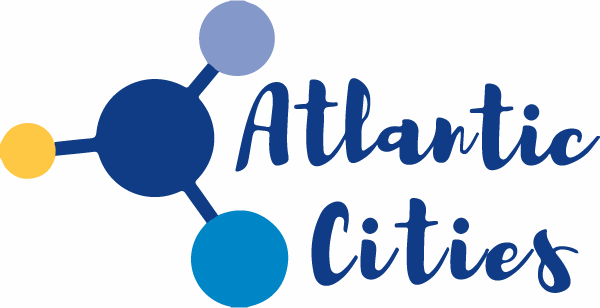Members
The network brings together cities and towns from 4 different countries: Ireland, France, Spain and Portugal. The members of the network are 17: Biarritz, Bilbao, Braga, Brest Métropole, Cork, Coruña, Donostia / San Sebastián, Faro, Gijón / Xixón, the Gipuzkoa Provincial Council, Lisbon, Rennes Métropole, La Rochelle agglomeration community, Las Palmas de Gran Canaria, Santander, Santiago de Compostela and Viana do Castelo.
Since 2025, the network has also Observer members, such as the maritime city of Den Helder in The Netherlands.

Lisbon
Lisbon, the capital of Portugal, has around 550,000 inhabitants. The centre of a Metropolitan Area with around 3 million inhabitants, it offers its visitors a huge variety of tourist attractions, port activity and services, combined with areas of historical interest resulting from its more than 1,000 years of history. Tourism plays a key role in Lisbon’s development and economic dynamism. Lisbon’s multicultural environment and its receptiveness to technological innovation have led to an increase in start-up incubators and creative industries. In 2023, the European Commission named Lisbon European Capital of Innovation. Lisbon aims to create a World Innovation Centre for the Sea Economy to attract companies and institutions linked to blue biotechnology.
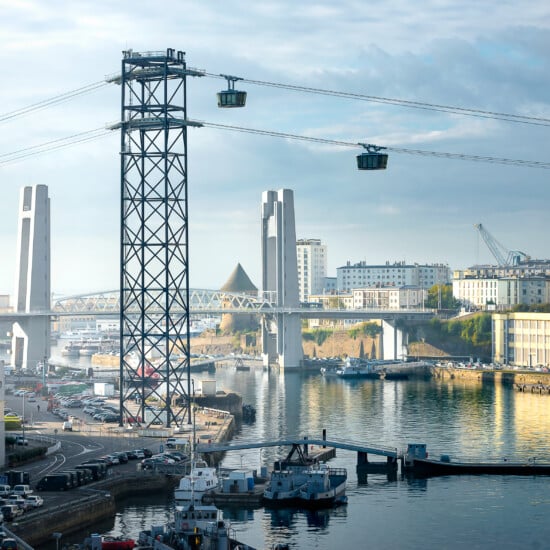
Brest
Brest métropole is a local authority located at the Western tip of Europe, at the crossroads of the Channel and the Atlantic. As a public authority, the métropole gathers the City of Brest and 7 surrounding towns, endorsing major competencies from environment to economic development, including areas such as waste, street lighting, transport, schools’ facilities, climate change, urban planning, waste and water management… Brest metropole represents around 210 000 inhabitants, located on a wider catchment and employment area – called “Pays de Brest” of 400 000 inhabitants. Port city, open to the world, the sea is in the DNA of Brest. Home to many marine and maritime skills working on a European and international scale, Brest cultivates its place as capital of marine science and technology.
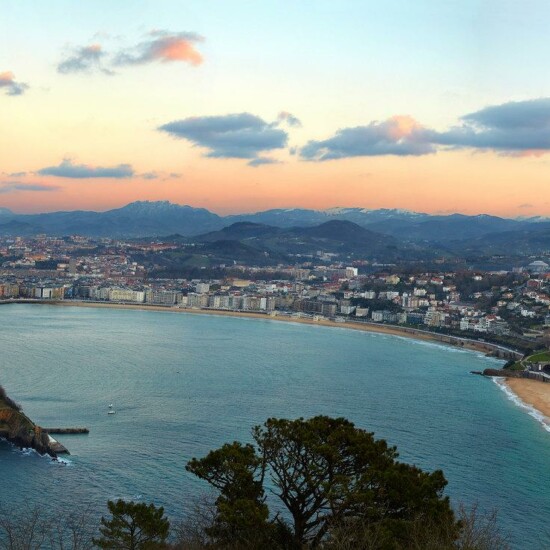
Donostia / San Sebastián
It is located in the north of Spain, close to the French border, in the province of Gipuzkoa (Basque Country). It has two official languages, Basque and Spanish. It has a population of 188,191 and a metropolitan area of 329,086. It has three urban beaches. The city enjoys a high quality of life, with social cohesion, and public space oriented towards a model of sustainability. Tourism has been the traditional economic activity, which has led to the development of complementary and internationally recognised sectors: commerce, gastronomy, culture; and a service sector supporting the area’s industrial sector. It is also a city of Science and Knowledge, especially in advanced sectors: Biosciences, Nanosciences, Electric Mobility, AI.
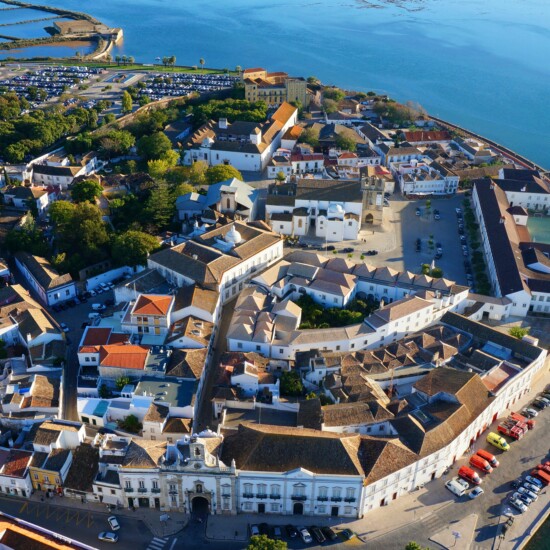
Faro
Faro is a Portuguese city, capital of the district of the same name and of the Algarve region. It has 46,310 inhabitants (2021) in its urban perimeter. The municipality of Faro has an area of 202.57 km2 and 67 859 inhabitants (2021), subdivided into 4 parishes. It is bordered to the north by the municipality of São Brás de Alportel, to the east by Olhão, to the west by Loulé and to the south by the Atlantic Ocean.
Key sectors: Tourism; Culture; Entrepreneurship; Coastal Resilience; Territorial Marketing

Cork
Cork (pop. 222,333) is Ireland’s second city and projected to grow by 50% by 2040. Its sustainable transformation into a city of European scale with high quality of life is being enabled over the next 5 years by a €2.5 billion pipeline of public infrastructure investment in housing; mobility;, civic & green spaces; & climate resilience. The city hosts over 190 multinational firms with strong ICT & Life Sciences concentrations, while metropolitan Cork has a notable pharma/biopharma sector. University College Cork & Munster Technological University, allied with leading research institutes, further contribute to a highly innovative and collaborative business ecosystem shaping a knowledge-based economy. Cork is a UNESCO Learning City, WHO Healthy City & EU Mission City for Climate-Neutrality.
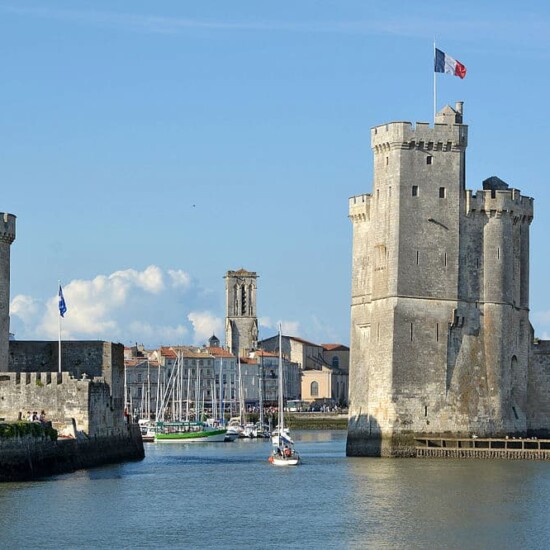
La Rochelle (Urban comm.)
With 70 kilometres of coastline and 9 of the 28 municipalities on the seafront, and close to the islands of Ré, Oléron, Aix and Madame, the La Rochelle urban area enjoys a privileged position on the Atlantic façade. Although the area is maritime, it also has a large proportion of farmland (65% of the area) and 10% of marshland, which is home to remarkable biodiversity.
The region combines natural attractions, economic dynamism, cultural and sporting vitality, grey matter and innovation. These assets attract new residents every year: 178,217 by 2021, with an average annual growth rate of 1.02% between 2015 and 2021.
Source: INSEE, RP 2015 and 2021″

Santander
Santander is a city on the northern coast of Spain with 173,638 inhabitants – a tourist, cultural and technological reference point. Its national and international connections with the Severiano Ballesteros airport and the maritime station make it a major national and international tourist destination. It is the artistic epicentre of northern Spain with the Botín Centre as a stronghold and the future cultural spaces of the Santander Lighthouse, located in the former headquarters of the Banco Santander, the Museum of Modern and Contemporary Art Reina Sofia Museum – Lafuente Archive. Its 5 kilometres of beaches and the majestic Bay of Santander together with its mild climate and a wide range of services supported by an innovative ecosystem in constant growth, make it one of the cities with the best quality of life in Spain.
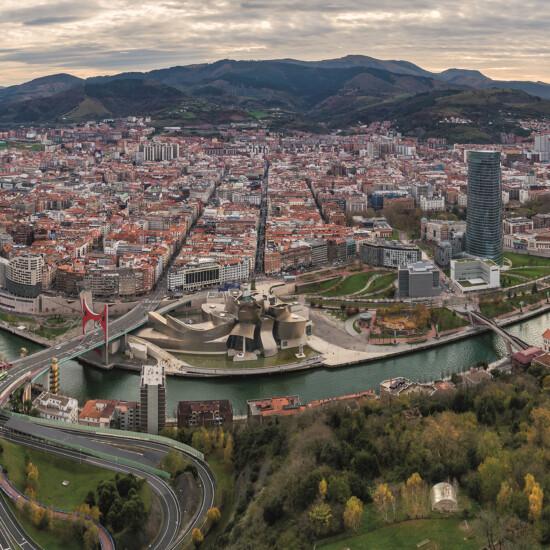
Bilbao
Bilbao is the capital of Bizkaia, one of the three Historical Regions of the Autonomous Community of the Basque Country. Situated 19 m. above sea level and with a surface area of 41.6 km2, it has a population of 350,000 inhabitants, although its metropolitan area is home to more than one million people. The history of Bilbao, founded in 1300, is reflected in the estuary that runs through the city. The city’s commercial, mining and seafaring origins are to be found in the medieval heart of the Old City. Its industrial and financial growth is reflected in Abando. And the area of the Euskalduna Palace evokes its naval past and the major industrial, economic and social crisis that forced the city to reinvent itself around the Guggenheim Museum, an icon of its urban and sustainable transformation process based on people.

Gipuzkoa
It is the executive body of the Historical Territory, which together with the General Assemblies, the legislative body, exercises not only the ordinary powers of a regular province, but also its own powers in areas as important as taxation, social policies or road infrastructures.
Gipuzkoa is a small territory with its own history and personality. It is located in a privileged enclave between the Bay of Biscay and the Pyrenees. Its slightly more than 720,000 inhabitants have managed to combine tradition and the avant-garde, maintaining its own language and placing Gipuzkoa in a privileged economic and social situation. Innovation and internationalisation are two fundamental characteristics of Gipuzkoan companies, recognised for their competitiveness and excellence.

Viana do Castelo
Viana do Castelo is Portugal’s northernmost Atlantic city, located around 25 minutes from Porto International Airport. With a total of approximately 90,000 inhabitants, it is served by functional motorways and a seaport. Visitors enjoy a remarkable quality of life, thanks to the tranquillity and safety of its urban life. It has a wealth of natural, monumental and historical heritage and is well equipped with excellent cultural, sporting and social facilities. With its unrivalled ethnographic culture, it is the capital of Portuguese folklore. It has many and varied industries set up in its business parks. It is very rich in handicrafts and nature, cultural and sports tourism, with with a special focus on sea sports.
Those who like it come to visit, those who love it stay!
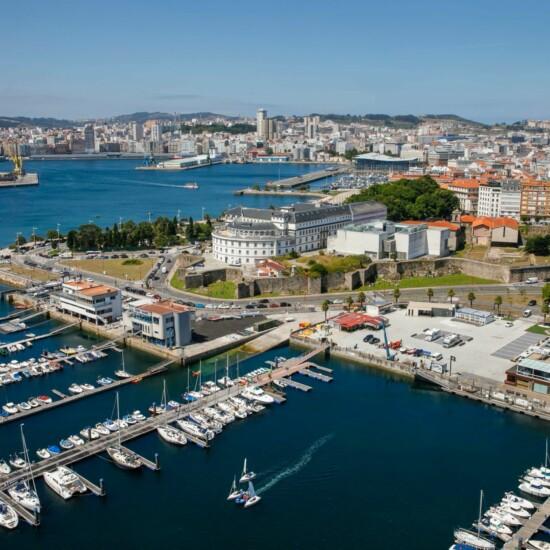
A Coruña
A Coruña is a Galician city located on the northwest coast of the Iberian Peninsula facing the Atlantic Ocean. With around 250,000 inhabitants, it is the economic engine of the community, generating, together with its surrounding area, 43% of Galicia’s GDP. Its port is the national leader in unloadings of fresh fish and is the first in Galicia in terms of tonnes and cruise passengers. It also stands out in the ICT field for the development of the ICT City and for being chosen as the headquarters of the first State Agency for the Supervision of Artificial Intelligence. In terms of heritage and tourism, the Tower of Hercules, the oldest working lighthouse in the world and a World Heritage Site, stands out, as does the longest seafront promenade in Europe.
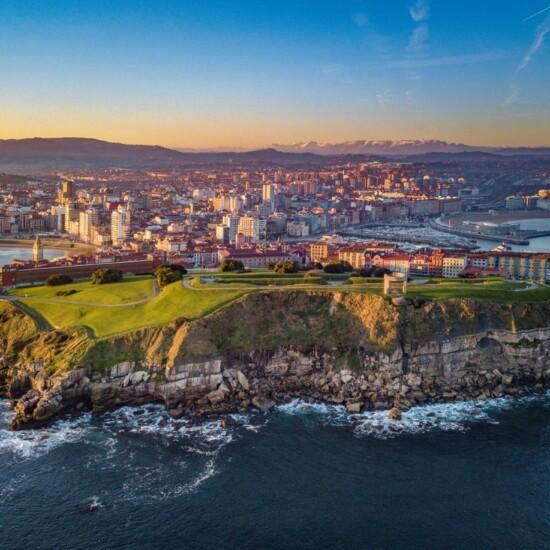
Gijón
The city of Gijón is located in the north of Spain, in the Principality of Asturias region. It has a population of over 273,000 inhabitants and is the most populated and industrial city in Asturias. It occupies an area of 181.6 km2 and is located in the central coastal area. During the 1960s and 1970s the city grew rapidly due to the development of the steel and shipbuilding industries and to coal mining. The harbour remains one of the main economic engines of the city. Since the 1980s Gijón has undergone a profound industrial regeneration, boosting the development of other economic sectors of the city: ICTs, services, tourism, cultural and creative sector, circular economy.
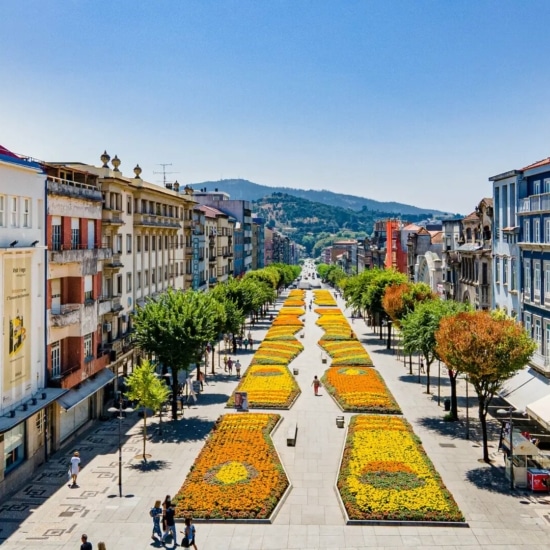
Braga
Braga is located in the north of Portugal and has a population of almost 200,000. With over 2,000 years of history, it is also Portugal’s youngest city. Braga strives to maintain its traditions and values its cultural, landscape and architectural heritage, while at the same time seeking to develop a sustainable future. One of the city’s most distinctive landmarks is Bom Jesus do Monte, declared a World Heritage Site by UNESCO. Braga was recently considered one of the best European cities to live in and one of the top emerging tourist destinations.

Las Palmas de Gran Canaria
Las Palmas de Gran Canaria is located in the northeast of Gran Canaria, of which it is the capital. It is a modern, cosmopolitan city, with a mild climate, considered internationally to be “the best climate in the world”. With an area of more than 100 square kilometres, it is home to a population of almost 400,000 inhabitants by right, and a de facto population of more than 500,000 – the ninth largest city in Spain and the most populated city in the Canary Islands. Its main activity lies in the service sector, without forgetting the strategic and vital importance of the Port of La Luz, the largest port in this area of the Atlantic and crucial for freight and passenger traffic. It also has a growing industrial sector, especially after the establishment of the Canary Islands Special Zone (ZEC) in 2000.
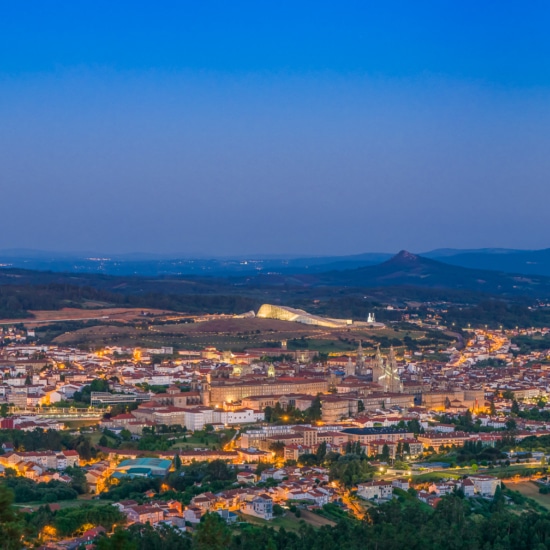
Santiago de Compostela
Santiago de Compostela is the capital of Galicia, a region located in the northwest of the Iberian Peninsula. It is an inland municipality of around 100,000 inhabitants, with a large rural area and a medium-sized city. Compostela is an administrative, university and religious centre, a destination of intense pilgrimage since the Middle Ages and a World Heritage Site. The exceptionally well-preserved historic city is the heart of an urban centre with traditional districts, a large area of green spaces and newer neighbourhoods. With an economy centred on services, which seeks to diversify, it is a welcoming city, characterised by diversity and cultural activity, mainly in the Galician language.

Rennes (City and Metropolitan Area)
The capital of Brittany, Rennes is a city of 220,000 inhabitants, known for its dynamic cultural life and community life, supportive housing policy, job market and vibrant student life. Today, Rennes is undergoing a major transformation, with the recent opening of its second metro line, its dense network of cycle paths and its urban project that gives pride of place to nature in the city… all just 1 hour 25 minutes from Paris by high-speed train (TGV). Rennes is a city of solidarity, a city where historical heritage meets urban culture and gastronomy, a city on the move that has managed to remain on a human scale.

Biarritz
A flagship destination forever marked by the visit of Empress Eugénie, Biarritz has always been a welcoming town, open to the world, which has succeeded in developing its economy and tourism, while preserving its architectural heritage and its exceptional natural environment, between the sea and the mountains. Today, people come here to enjoy the waves, the casino and the greens, as well as a rich cultural programme all year round.
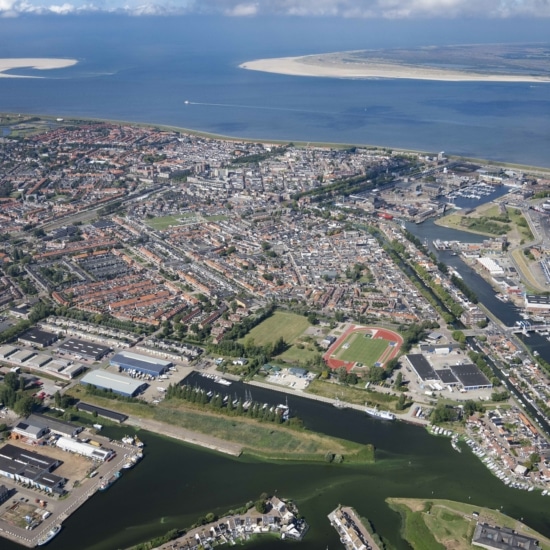
Den Helder
Observer member. Den Helder is located at the border between the North Sea and the Wadden Sea (a Unesco World Heritage site). Recognized by Napoleon two hundred years ago for its strategic location. He called it ‘Gibraltar of the North’ and designed unique fortifications of which some are still in use. Today Den Helder is still the home base of the Royal Netherlands Navy. The surrounding region has a wide range of high-quality maritime suppliers, marine research institutes and educational organizations. The sea is always close by and an important factor of our personal and professional life. Den Helder has 56.000 inhabitants and covers an area of 178.83 km², of which 133.42 km² is water.
How to join the network
Who can join Atlantic Cities?
Membership of Atlantic Cities is open to any municipality or urban area located on the European Atlantic facade, as defined by the European Commission, that is, including inland territories, and in the following four countries: Ireland, France, Spain and Portugal.
Other stakeholders (local and regional authorities, organisations, institutions) may also collaborate with the network by becoming observer members.
Membership fees
Download the membership fees here.
How to become a member?
To join the network, please contact the technical secretariat at the following e-mail addresses:
